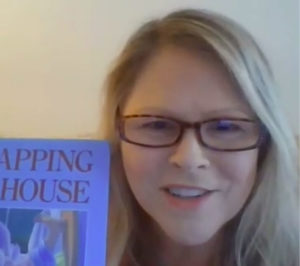Children are never too young to learn about anti-racism. They recognize differences all around them, and if you incorporate anti-racism teaching in your everyday living, they will grow up with a strong understanding of the importance to practice God’s love for all people and the importance to be active in the ceasing of racism.
It all starts small; small steps with small people (children).
By the time a child is 3, he or she is usually beginning to ask a lot of questions about the world around them.
Even when you believe they have not had access, they have overheard the news about protests and racism, and they have witnessed or felt the deep emotions from those around them concerning events and tragedies in the news. Young children often do not express concern or interest, but they most definitely are concerned and interested in their own developmental way.
Here are 10 ways to break down barriers and teach anti-racism at home along with resources to help adults navigate how to interweave anti-racism into everyday life, how to explain difficult situations and events, how to have important conversations, and how to do something about racism with children from a very young age.
- Recognize that teaching young children to be anti-racist begins at home. Very young children are learning everything from you at home from the time they are born.
- Watch very kid-friendly Sesame Street episodes to help very young children understand the world around them. This page includes a video on how to explain racism to young children, and another where Sesame Street character Abby Cadabby shares her story about standing up for others.
- Enjoy cultural experiences together frequently as a family as part of your routine living, not just for special occasions. For example, learn how to make fry bread together to compliment your meal and have a conversation about where the recipe came from, enjoy different genres of cultural music, appreciate diverse art, and visit cultural festivals when the pandemic is over.
- Enhance your child’s personal library. When choosing anti-racism books for very young children you do not always have to choose a books specifically addressing racism. Help your young child learn to recognize All of God’s children by selecting books that include people of all races in everyday life. Some great examples of favorites are:
-
- More More More Said the Baby by Vera Williams
- All the World by Liz Garton Scanlon
- The Snowy Day by Ezra Jack Keats
- I am Truly by Kelly Greenawalt
- Rain! by Linda Ashman
- When God Made You by Matthew Paul Turner
- Over and Under the Pond by Kate Messner
- Mama Do You Love Me? by Barbara M. Joose
- The Wheels on the Tuk Tuk by Kabir Sehgal
- What Can You Do With A Paleta? by Carmen Tefolla
- What Should I Make? by Nandina Nayar
- Don’t be afraid to address your child’s questions or statements that may make you feel uncomfortable, like “Why is her skin brown?” Keep the developmental age of your child in mind in your response, understand that young children are not meaning to be cruel so never scorn them for their questions. Build trust between you by listening and thoughtfully responding and taking advantage of teachable moments around you in the future. Now is a great time to utilize resources to help you in your conversations.
- Provide diverse skin-toned art materials like crayons, markers and paper for your children to enjoy using when drawing /creating people in their artwork and encourage them to do so.
- Provide diverse patterns from different cultures in your home, such as pillows, wall art, towels, jewelry, clothing, etc. So many patterns, fabric, designs from around the world are beautiful, spark conversation, and celebrate diversity.
- Provide diverse toys for your young children. When selecting toys, think about dolls with different skin tones and hair textures. Provide toys that reflect diverse people, such as Little People, Legos, etc.
- Recognize that alongside having conversations with our children and providing them with anti-racism materials, we must continue to look within ourselves and continue the process of changing ourselves and taking action against racism. Be conscious of the friends you have, the demographic of your neighborhood and city, who you place yourself beside at events, anything to help yourself become more aware. This is a continuous journey of discovery, understanding, and self-reflection for ourselves as parents.
- Take action in some way that you can share with your children. Children are never too young to witness your actions. It might mean showing them a letter you are writing to your local representatives and taking them with you to vote to make change happen. In a broader perspective of human rights, show your children the importance of donating food and other things to help others. Being visibly active and making conscious efforts to support God’s love for all people will show your children how to live in a diverse world where all people are celebrated, cared for, respected and enjoyed.
Here is a list of resources, including podcasts, articles, books and toys for young children and their parents on “Your Kids Are Not Too Young To Talk About Race.”
“Anti-Racism for Kids 101: Starting to Talk About Race” is a great starting place for adults to learn how to talk to very young children about anti-racism.

